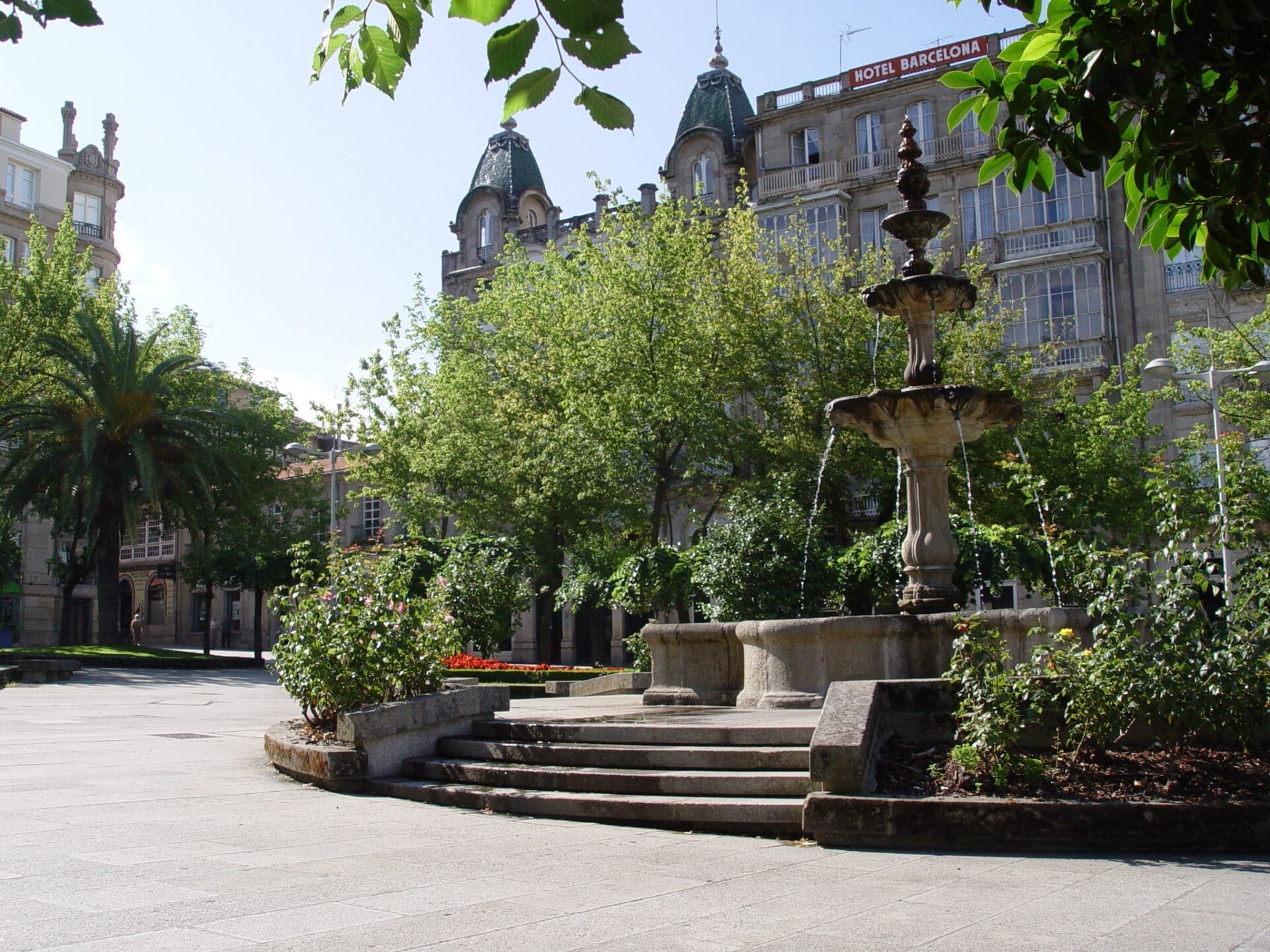Of medieval origins, these gardens are today one of the corners that still retain the charm of the late 19th and early 20th centuries, with magnificent examples of modernist architecture. Crossed by Progreso Street, its upper area is known as the Bishop Cesáreo Gardens, and is centered by a beautiful fountain brought from the Monastery of Oseira. In one corner, a sculpture dedicated to the writer Eduardo Blanco Amor seems to contemplate the peaceful stroll of this promenade, a transition between modern and medieval Ourense.
Place of councils, which were the neighborhood meetings where public affairs of the medieval city were discussed (the Galician word concello comes from consejo), it was also the Town Hall Garden planted with olive trees. In its central part was the Hospital of San Roque, and with the opening of the old Vigo-Villacastín road, now Progreso Street, it was transformed into an urban space where large representative buildings of that time were built, straddling the 19th and 20th centuries. The aesthetic ideal of the thriving local bourgeoisie of the time is felt in the works of the architects of the moment, Daniel Vázquez Gulias (Casa Román, with its beautiful gallery; the Hotel Barcelona; the Casa Junquera) and Manuel Conde (the Market Hall building) among others. Also noteworthy in the ensemble is the new Episcopal Palace, designed at the end of the 19th century by Queralt, and which was conceived as a seminary.

 Ourense, Galicia
Ourense, Galicia


 Alameda de Ourense
Alameda de Ourense 




